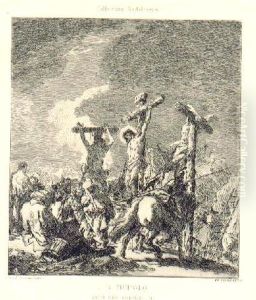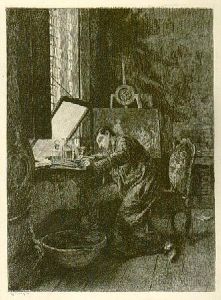Charles Jean Courtry Paintings
Charles Jean Courtry was a French engraver who was born on September 14, 1846, in Paris, France. He was well-known for his mastery in the art of etching and engraving, particularly for his ability to reproduce the works of other artists with great fidelity and artistic sensitivity. Courtry studied at the École des Beaux-Arts in Paris, which was the foremost art school in France, and he was a pupil of the celebrated engravers Léopold Flameng and Maxime Lalanne. His education at the École des Beaux-Arts equipped him with the rigorous training and technical skills necessary for his craft.
During his career, Courtry became highly esteemed for his engravings after famous paintings by old masters and contemporary artists alike. He worked on subjects ranging from historical and genre scenes to portraits and landscapes. His engravings were characterized by their fine detail, delicate lines, and the ability to convey the textures and subtleties of the original artworks. This made him a favorite among artists and publishers who sought to make fine art more accessible through printed reproductions.
Courtry's reputation grew as he participated in numerous exhibitions, including the Paris Salon, where he exhibited regularly. He was awarded several medals for his work, including a second-class medal at the Salon in 1875 and a gold medal at the Exposition Universelle in 1889, a world's fair held in Paris that celebrated the 100th anniversary of the French Revolution. His success at these exhibitions helped solidify his standing as one of the premier engravers of his time.
In addition to producing engravings after existing artworks, Courtry also created original compositions. His body of work contributed significantly to the revival of interest in the art of engraving in France during the late 19th century. Not only was he a practitioner of the craft, but he also played a role in educating the next generation of engravers.
Charles Jean Courtry passed away on December 31, 1897, in Paris. While he may not be as widely known today as some of his contemporaries, his contributions to the art of engraving remain important, and his works are still appreciated by collectors and connoisseurs of fine prints. His engravings can be found in various museum collections, including the Bibliothèque nationale de France and the Metropolitan Museum of Art in New York.

